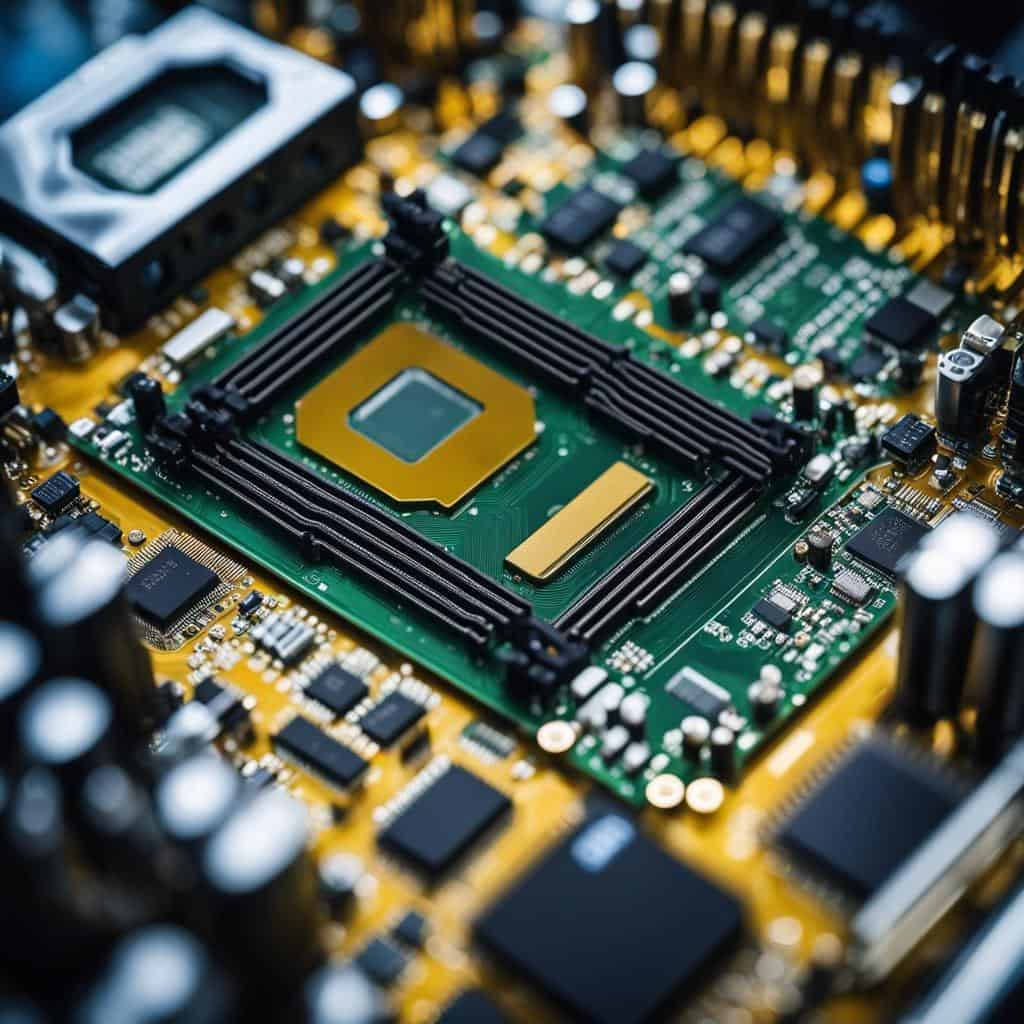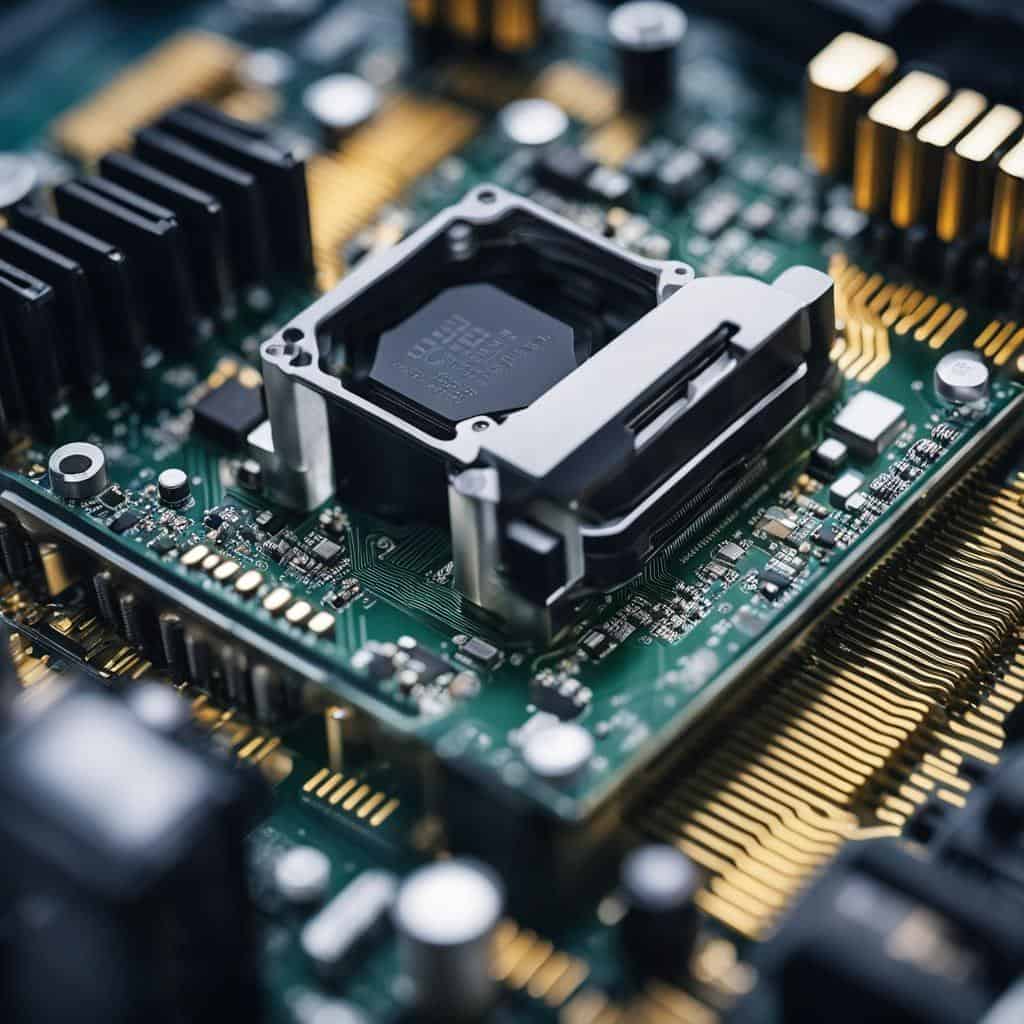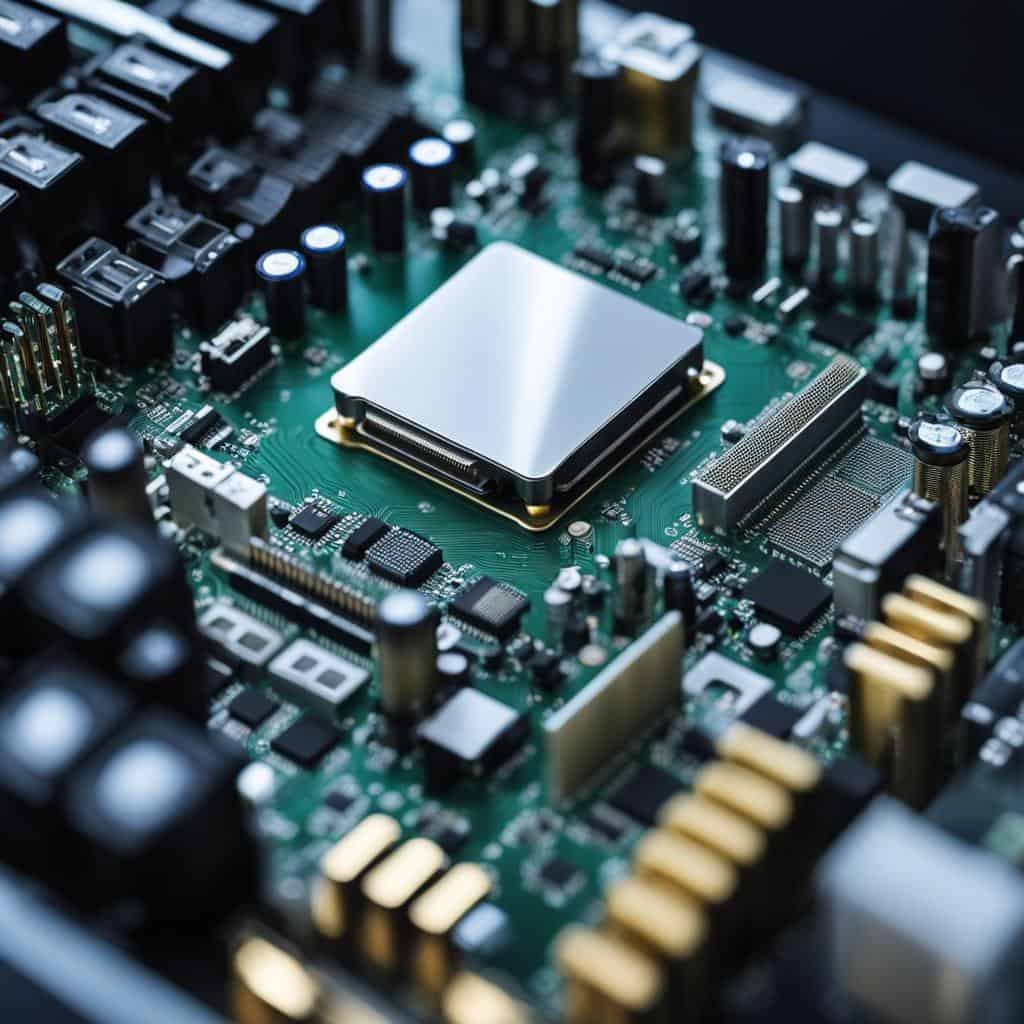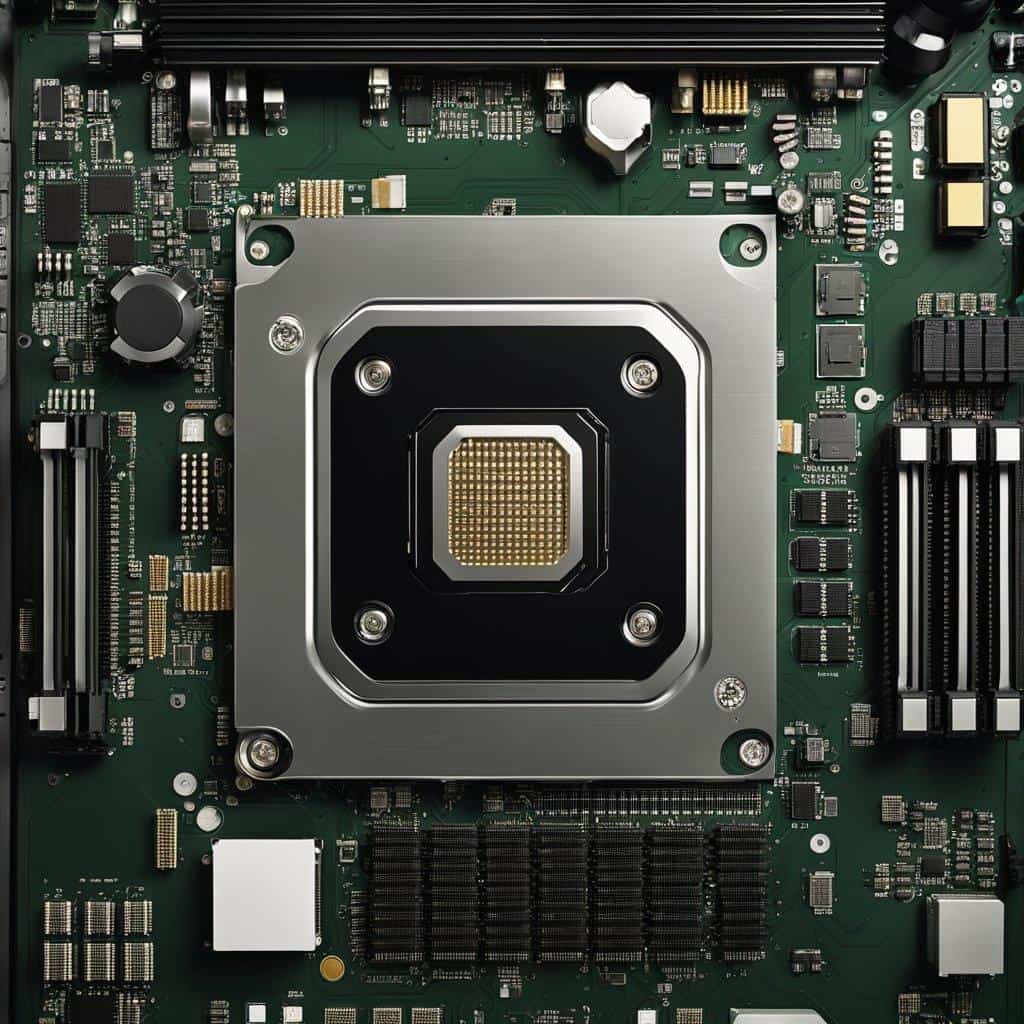TL;DR:
- A PC comprises crucial parts like the CPU (the brain), RAM (short-term memory), hard drive/SSD (long-term memory), and the motherboard (connects and powers all PC parts).
- The CPU, RAM, and network interface card (NIC) significantly impact a PC’s performance. The CPU manages tasks, RAM enables multiple simultaneous tasks, and the NIC manages data transfer when online.
- PCs offer primary (RAM) and secondary (Hard Drive/SSD) storage options. Their capacities vary from gigabytes to multiple terabytes.
- PCs use fans, heat sinks, and custom cooling loops to prevent overheating, essential for optimal performance.
- Assembling a PC involves connecting various components to the motherboard and powering them.
- Troubleshooting involves checking part functionality, verifying connections, and considering preventive maintenance.
- Upgrading encompasses replacing various components, with choices dependent on specific needs and compatibility.
- Each hardware brand is unique in design, cost, and performance. Motherboards vary in shape, size, and specifications.
- The future of computer hardware involves adopting cutting-edge tech trends, enhancing gaming performance, and playing a critical role in AI computing.
Curious about what’s humming inside your computer? Venture into the digital jungle with this comprehensive guide, “What’s on the List of Internal Computer Parts?” We decipher the roles of core components, CPU functions, memory modules, SSDs, and more. Whether you’re a tech enthusiast or a pro, let’s turn that tech curiosity into mastery! Let’s open that computer door and venture into its intricate world. Are you ready to delve in?
What is Inside a Computer?
What are the Main Components of a PC?
A typical PC has a few core parts. The brain of the PC is the CPU. It cranks through your data, making your software work. RAM holds data, sorts it, and makes it fast to get to. The hard drive or an SSD is your long-term memory. It stores your files and info until you want it.
How is a Motherboard Essential to a PC?
Think of a motherboard as the ‘town mayor’. It helps each PC part ‘chat’ with each other. It also sends power to your PC’s pieces. Each part, like your CPU and RAM, attaches to the motherboard. If the motherboard has issues, your PC may not work right.
What are the Key Differences between a Hard Drive and an SSD?
A hard drive is like a tiny record player. It writes and reads your data on a disk. An SSD does the same job but in a different way. It uses tiny chips, like in your phone, to save your info. SSDs are silent, and they don’t use as much power. But, hard drives can hold more data, and they cost less.
How does CPU and RAM Impact a Computer’s Performance?
Let’s dive into the heart of your computer. First off, we have the central processing unit (CPU). This is your computer’s brain. It runs the show, managing all the tasks your computer performs. When it comes to the speed and efficiency of your computer, the CPU is key. It’s like the quarterback of a football team, directing and executing plays.
But what about RAM?
Random Access Memory (RAM) is your computer’s short-term memory. It holds data that your computer uses at the moment. Imagine RAM as your computer’s workbench. The larger the workbench, the more tasks you can work on at once. So, more RAM can help your computer handle more tasks at once without slowing down.
Next up is the network interface card (NIC). It might sound super complicated, but it’s just a fancy term. This is like the post office of your computer. It manages all your data going in and out of your computer when you’re online. It’s important because, without it, there would be no sending emails or surfing the web.
In short, the CPU, RAM, and NIC are crucial to making your computer work smoothly. Think of them as the gears in a well-oiled machine. Now, the next time your computer acts up, you’ll have a better idea of what’s going on inside!
What are Various Storage Options in a Computer?
In a computer, storage options are classy. They come in primary and secondary types.

What’s the Difference between Primary and Secondary Storage?
Primary storage, often called RAM, has a key task. It stores data that we use right away. For instance, when you play a game, the game’s data is in primary storage.
On the flip side, secondary storage, like hard drives, keeps data safe when you’re not using the PC. When you save your game, that data goes here.
What are the Various Storage Device Options?
In this tech modern age, we have many storage devices. We have hard disk drives that spin around and solid-state drives that do not. Some people also add extra storage with USB flash drives.
What are Data Storage Capacities?
At last, we come to data storage capacities. This term tells us how much data a device can store. It can range from a few gigabytes in USB drives to multiple terabytes in hard drives. This means you can have heaps of room for your apps, files, and games!
How are Computer Components Cooled?
Let’s dive into the fascinating world of computer cooling. Ever wonder how your PC keeps its cool while working away?
How does a PC Cooling System Work?
A computer’s cooling system plays a crucial part in maintaining its performance. Specifically, it keeps your machine’s temperature down, preventing overheating. Here’s the secret: fans! Yes, fans, quite like those you use in hot weather. The PC uses them to circulate air, cooling down various components inside the case.
What are Heat Sinks and Cooling Mechanisms?
Hang on! It’s not just fans doing all the work. Heat sinks and other cooling mechanisms also contribute. These metal objects with many fins whisk away heat from components such as the CPU. The aim here is to direct the heat towards the fans to push it out of the system.
What Purpose Do Custom Cooling Loops Serve?
Now, let’s talk about custom cooling loops. They may seem fancy, but their goal is the same: dissipate heat. These cooling systems are quite intricate and use liquid, usually water, for heat transfer. They are popular with gamers and heavy users due to their effective cooling capabilities.
How to Assemble a PC?
Building a PC tests your puzzle-solving skills. It’s a joy when all the pieces fit right.

What is a General Guide for Assembling a PC?
First, gather your parts. Think of this as getting ready to bake – each ingredient plays a crucial part in the recipe. In building a PC, those parts include the CPU, motherboard, RAM, power supply, hard drives, and any extra cards, like a video or sound card.
How are PC Hardware Components Installed?
Connecting each component is a step-by-step process. You’ll start with the CPU, which is your PC’s central command. Fix the CPU into the motherboard (or the PC’s heart). Secure the RAM into the motherboard’s memory slots next.
Add the hard drives, carefully plugging each drive into its power connector. Install any other hardware now, like a graphics card. Lastly, connect all components to the power supply.
What Tools are Essential for PC Assembly?
You’ll need a Phillips-head screwdriver, an anti-static wrist strap, and a work area that’s both spacious and clean. Don’t rush. Assembly is a slow but rewarding process. A job well done has its satisfaction. Happy building!
How to Troubleshoot Computer Hardware Issues?
Computer parts can fail, but don’t panic. Diagnosing computer part failures starts with checking each part’s functionality. Is the cooling fan of the CPU spinning? Is the VGA port connecting to the monitor? Verify all connections and eliminate looming problems.
Wondering about common hardware troubleshooting techniques? Start by checking the power supply system or look for damage on your hard drive. Inspect the RAM for data issues. Harmed monitors can be a concern too, and you might need to replace cables to fix it.
Never underestimate the value of preventive maintenance for PCs. Cleaning internal debris, removing extra files, and adding more RAM helps in maintaining your computer. Remember, a well-cared-for PC is a long-lasting PC.
Now that you have your troubleshooting plan, roll up those sleeves, and let’s dive into the vast world of computer hardware!
Failure or malfunction? No problem! Keep calm, do your checks, and let your inner computer technician shine. Trust me, it’s like solving a satisfying puzzle.
What are some Options for Upgrading Computer Parts?
Let’s dive right into upgrading your computer. Upgradable parts range widely. A new CPU, for example, can speed things up. Picking the right one though needs careful thought.
Which Computer Parts Can be Upgraded?
Practically anything inside your computer can be updated. Your pick from hard drives to the fan. The key is to know what needs upgrading and why you’re doing it.
How to Select the Right CPU for Upgrades?
Now, selecting a CPU involves a little more finesse. You want to consider the brand, number of cores, clock speed, and power requirements. The right CPU will match your computing needs and work well with your motherboard.
What to Consider when Selecting a Video Card for Upgrades?
Choosing a video card? Well, this mainly impacts visual performance. So, focus on memory size and type, clock speed, and cooling capacity. Plus, check that it fits your motherboard and power supply too!
How Different Are Computer Hardware Brands and Models?
Let’s talk about differentiation. Yes, in the busy world of computer hardware!

How are Various Hardware Brands Differentiated?
Each hardware brand has its traits. It could be in the design, the cost, or performance. For example, Intel processors are known for their high performance but come at a premium price. AMD processors, on the other hand, usually offer better value for money.
Quick fact: Apple designs and builds its processors!
What are the Different Kinds of Motherboards?
Motherboards come in varying shapes, sizes, and specifications. The two most common types are ATX and microATX. ATX motherboards have more space for expansions. MicroATX motherboards are compact but might have fewer expansion slots.
What are the Current Market Trends in PC Hardware?
Look out for AI and machine learning. These are fast-growing trends in the PC hardware market. You also find an increased demand for high-performance CPUs and GPUs due to the rise in gaming and content creation.
Remember to always do your research before buying any internal hardware. Differentiate between what you need and what the market offers. Be clever in your choices! Let’s continue our journey in the next section!
What’s the Future of Computer Hardware?
How to Future-Proof Computer Hardware?
To future-proof your computer hardware, keep a check on cutting-edge tech trends. Think ahead; select parts that adhere to current standards yet have room for possible updates. Like a high-speed RAM or a CPU with numerous cores will last longer even as software progresses. Always get hardware with the latest connectivity ports to ensure high-speed data access.
How can Hardware Enhance PC Gaming Performance?
If you love PC gaming, hardware is key! A competent graphics card renders spectacular visuals, boosting immersion. Also, a powerful CPU and sufficient RAM ensure smooth and lag-free gameplay. Sound familiar? That’s the magic of top-tier hardware.
What Role does Hardware Play in AI (Artificial Intelligence) Computing?
In AI computing, hardware accelerates tasks like learning and prediction. For example, GPUs (Graphic Processing Units) boost AI computation speed. It’s the high-end hardware that permits AI to process massive data, learn from it, and function effectively.
So there you have it! A sneak peek into the future of computer hardware. As technology evolves, stay informed and keep your hardware up to speed. Keep in mind, that every little bit counts when you’re going for that gaming high score or running your favorite AI model.
Conclusion
Through this comprehensive guide, we’ve explored the nuts and bolts of computers. Now, fully understanding PCs and their varied components should no longer seem daunting. As technology advances, keeping ourselves updated is critical.
So, always be keen on learning to stay at the forefront of skillful PC use and troubleshooting. Remember, each part we’ve discussed forms the key to efficient performance. Aim for a computer that not only meets your current needs but also is future-proofed. Happy computing!

